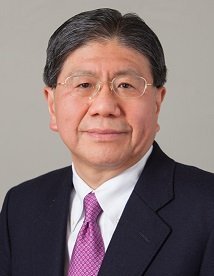
Portrait Prof. Nishide
Image: Prof. Dr. Hiroyuki NishideCurriculum Vitae
Hiroyuki Nishide is a Professor at Research Institute for Science and Engineering, Waseda University, Tokyo, Japan. He served as Dean of School of Advanced Science and Engineering for 2010-15, Waseda University. He received his PhD in 1975, and has been visiting researcher at Free University Berlin and Polytechnic University New York. He has conducted research in the field of syntheses and applications of functional polymers, recently focusing on the organic polymers for rechargeable batteries and photovoltaic cells. He was awarded with Prize for Science and Technology by the Ministry of Education and Science, Japan, The Chemical Society of Japan Award, and so on. He is Past-President of the Society of Polymer Science, Japan, of the Federation of Asian Polymer Societies, and of Japan Union of Chemical Science and Technology.
Learn more about Prof. Dr. Hiroyuki NishideExternal link
Abstract
Radical Polymers as an Organic Charge-Transport and Energy-Storage Material
Hiroyuki Nishide
Research Institute for Science and Engineering, Waseda University
Tokyo 169-8555, Japan
Phone: +81-3-3200-2669
Fax: +81-3-3209-5522
E-mail: nishide@waseda.jp
A breakthrough made for the charge-transporting and -storing organic materials by the use of radical polymers is described. The organic radical polymers are a series of polymers bearing robust nitroxides, triaryl aminiums, phenoxyls, etc as electron-releasing and -gaining sites per their repeating unit. They are characterized by both a dense population of the radical redox site and an amorphous plasticized state with the coexistence of small amount of electrolytes, to allow very fast self-exchanging reaction among the sites with the driving force of steep concentration gradient, and to provide efficient charge-transport and -storage throughout the polymers. The very high charge-transporting capability, i.e. redox conduction, within the purely organic polymers led to the tremendously large current density beyond 100 mA/cm² and the electrical conducting for the long distance of 50 μm. Chemical bistability of the reduced and oxidized species of radical polymers permits both ultimate energy density and durable cyclability in charging and discharging. Various types of batteries were fabricated with the radical polymers as the electrode-active materials. Output voltage of the batteries is fluctuating-free, corresponds to their redox potential difference, and is tunable with their molecular designing. The batteries provide burst power, which also allows instant full charging in a few seconds. The ultrafast electrode-activity of radical polymers was also tested as an adhesive additive in the conventional Li ion batteries. The radical polymers were also examined as the charge-transporting mediator in photovoltaic and water-splitting cells and as the hydrogenation/dehydrogenation site for a hydrogen-carrier. Organic radical polymer-based devices are, of course, characterized by the inherent advantages of flexible, even stretchable, resource-unlimited, and environmentally benign properties.
